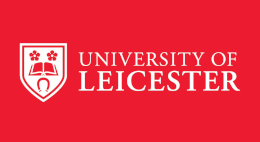2007BinThaniASphd.pdf (11.7 MB)
Genomic diversity of ten Escherichia coli strains associated with bloodstream infections.
thesis
posted on 2009-02-23, 10:07 authored by Ali Salman Bin ThaniEscherichia coli are usually regarded as a harmless human colonic flora. However,
pathogenic strains of E. coli have been associated with infections that could range from infected mucosal surfaces by intestinal pathogenic E. coli to the more severe cases of disseminated infections throughout the body by the extraintestinal pathogroups. The main focus of this project was to investigate the genomic contents of pathogenic bloodstream infection (BSI)-associated E. coli strains. This is because the genome contents of the E. coli BSI-associated isolates have not been well studied, with only few reports indicating that the pathogenincity of these strains could be attributed to horizontally acquired DNAs known as genomic islands (GEIs).
The genomic contents of 10 clinical BSI-associated E. coli strains, isolated at the
Leicester Royal Infirmary were investigated in this study. The first approach used to
investigate the genomic contents of these strains was by interrogating the downstream
ends of tRNA genes for their GEI contents by the sequential PCR strategy tRIP-PCR
(tRNA interrogation for pathogenicity islands) followed by the SGSP-PCR (single
genome specific primer-PCR). In this approach the flanking regions of the tRNA sites were used to first screen the tRNA genes for their GEIs followed by amplifying the boundaries of the identified GEIs. In the second approach termed Microarray-Assisted mobilome Prospecting (MAmP), the physical genome size of the tested strains obtained by the pulsed-field gel electrophoresis (PFGE) is compared to the sum total of the bits of the genome detected or visualized by the array. The difference between the two measurements is used to estimate the size of the novel, non-microarray-represented mobile genome (mobilome) present in the tested strains.
Remarkably, despite only studying 10 E. coli strains, associated with a single disease
type the tRIP-PCR method has identified at least 3 GEIs that contain novel sequences,
and 46 GEIs, resembling uropathogenic E. coli CFT073-like entities. One particular
strain E105 had 13 tRNA sites occupied with GEIs. On the other hand, an average
novel, non-microarray-borne mobilome of (219 kb /strain) was obtained by the MAmP
which, corresponds with previous studies.
The strategies used in this study had proved successful in addressing and identifying
mobilome-rich strains. Therefore, using such approaches in combination with whole
genome sequencing progects could prioritize the strains and the genomic regions that
need to be sequenced. Such prioritization would avoid sequencing of hundreds of
isolates to identify their novel gene pool and would reduce the cost of genomic
sequencing. Moreover, applying such approaches for the identification of new virulence genes and/or pathogenic mechanisms could lead to significant improvements in the
treatment of E. coli infections.
History
Supervisor(s)
Rajakumar, KumarDate of award
2008-01-01Awarding institution
University of LeicesterQualification level
- Doctoral
Qualification name
- PhD

